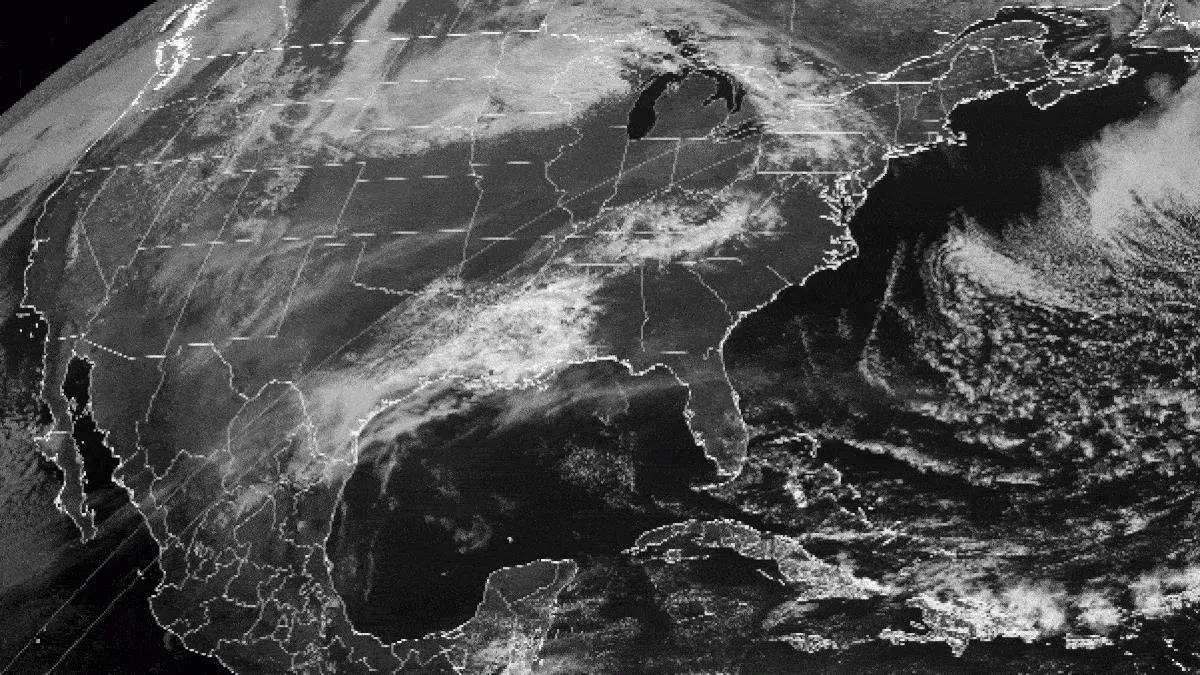
On April 8, 2024, a remarkable total solar eclipse captivated millions across North America. This celestial event saw the moon's shadow, or umbra, racing across the continent at astonishing speeds of over 1,500 mph (2,400 km/h), transforming day into night for a brief period. Viewers in the United States, Canada, and Mexico eagerly looked skyward as the moon temporarily obscured the sun, creating a breathtaking spectacle.
This historic eclipse marked the first total solar eclipse visible from North America since 2017 and the longest totality experienced on the continent in 54 years. For some locations, the duration of totality lasted up to 4 minutes and 28 seconds. The total solar eclipse provided a rare opportunity for scientists and enthusiasts alike to observe unique phenomena, as the darkness descended.
The stunning satellite video capturing this event was taken by NOAA's GOES-16, the 16th Geostationary Operational Environmental Satellite. Orbiting approximately 22,300 miles (36,000 kilometers) above Earth, GOES-16 maintained a fixed position, allowing it to document the moon's shadow as it traversed from western Mexico to eastern Canada over a span of roughly four hours. Thousands of images were collected and digitally stitched together to create a mesmerizing time-lapse video of the eclipse.
In addition to GOES-16, other spacecraft also contributed to the visual documentation of the event. NASA's Deep Space Climate Observatory (DSCOVR), stationed about 1 million miles (1.6 million kilometers) from Earth, recorded the shadow's path as it moved across the globe. Furthermore, astronauts aboard the International Space Station (ISS) captured breathtaking close-up photographs of the moon's shadow, taken from their vantage point of around 260 miles (418 kilometers) above the Earth's surface.
The 2024 total solar eclipse was not only a visual feast but also a source of scientific intrigue. Observers noted several unusual phenomena during the event, including pink or red spots around the obscured sun. Initially mistaken for solar flares, experts later clarified that these were actually solar prominences—plasma plumes that extend above the surface of the sun without exploding outward.
On the same day as the eclipse, astronomers identified a tiny sungrazer comet approaching the sun, which was photographed during totality before being consumed by our home star just hours later. Another fascinating observation was a subtle alteration in global time signals, as the eclipse cooled the upper atmosphere and slightly impacted how radio signals were transmitted across North America. Although these changes were minor and did not affect timekeeping devices, they highlighted the eclipse's influence on our planet.
During the eclipse, many other remarkable phenomena were reported, including disappearing clouds, the visibility of daytime planets, and various optical effects around the sun such as Baily's beads and diamond rings. Additionally, both wild and captive animals exhibited signs of confusion as the skies darkened, further emphasizing the eclipse's profound impact on the environment.
The 2024 total solar eclipse was a significant event that not only fascinated millions but also provided invaluable insights for scientists and astronomers. As we reflect on this extraordinary occurrence, it reminds us of the wonders of our universe and the captivating beauty of celestial events.